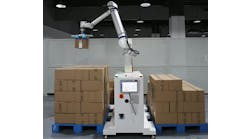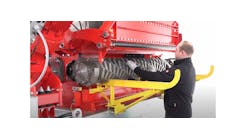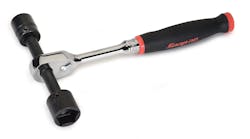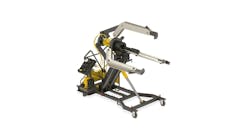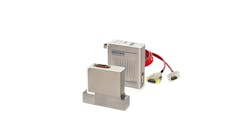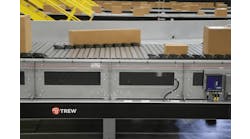Steelmaker ArcelorMittal S.A. relies on a heat exchanger to convert waste gas into heating fuel for public buildings and private residences in Dunkirk, France. By 2020, an additional 19 miles of pipes will be added to the heating network to supply the equivalent of 28,000 homes in northern France, according to the company.
Similar sustainable heating and cooling efforts across a wide range of industries are having a significant impact on the demand for heat exchangers worldwide. The global heat exchanger market is expected to experience an 8% compound annual growth rate during the 2017 to 2023 period, according to Energias Market Research. Population increases in emerging economies and sustainability initiatives will be the two primary factors driving heat exchanger market expansion, the report stated.
The report highlights the critical role that heat exchangers play in industrial energy efficiency. Proper maintenance of heat exchangers can ensure they’re operating at the most efficient levels and reduce the likelihood of failure. Scaling is one of the most common maintenance issues that facilities encounter with water-operated equipment.
Scaling impedes the heat-transfer capabilities of a heat exchanger, which can result in reduced flow and more strain on the system pumps, says Tim Fregeau, director of sales, Liquid Solutions Division, Goodway Technologies.
“The heavier the scale build-up, the less efficiency you’ll have on a piece of equipment,” Fregeau says.
Brazed plate heat exchangers (BPHEs) are becoming more common in industrial environments because of their inherent energy-efficiency advantages. BPHEs are gasket free and assembled using brazing technology, which creates a compact unit with no loose or moving parts, according to SWEP, a Swedish supplier of BPHEs.
BPHEs maintain high-turbulent flows, which helps prevent scaling. But scaling is still possible if the system is exposed to hard water or a high pH content.
Clean-in-Place Descaling
As cooling water travels through the heat exchanger, minerals can accumulate on the BPHE surface and create an insulative barrier. If unattended, the two sides of the heat exchanger can become fused together, Fregeau says. In addition to efficiency loss, continued scale build can act as a breeding ground for particulate fouling, which can result in corrosion issues.
Earlier this year, Goodway and SWEP made a clean-in-place solution available to SWEP’s BPHE customers. Cleaning in place is a method of flushing interior surfaces, such as pipes and vessels, by circulating a liquid through the system.
SWEP’s heat exchangers use Goodway‘s ScaleBreak-MP to clean without impacting the long-term reliability of the equipment. ScaleBreak-MP is a multipurpose blend that includes corrosion inhibitors, wetting, and penetrating agents. It’s a biodegradable solution that dissolves scale deposits so they can be flushed out without leaving any residual solution. The safety of the solution is important because harsh chemicals can compromise the system over time, Fregeau says.
“A lot of companies use a diluted hydrochloric acid blend,” Fregeau says. “Hydrochloric acid can have downstream effects over time that can cause embrittlement of stainless steel or stress cracking corrosion. We saw an opportunity to create different products that would retain the speed and effectiveness that customers see with an HCl-type blend while maintaining the safety of the stainless steel base alloy. As such, some of our blends are formulated with HCI and some, such as ScaleBreak-MP, are formulated without it.”
Scale Removal Process
The descaling process may differ slightly for various types of heat exchangers. The recommended circulation time to flush the solution through the system depends on the size and volume of the equipment and the thickness of the deposit that must be removed.
“If you have a larger piece of equipment and you have a lot of surface area and heavy deposit, obviously it’s going to take a lot more circulation time and descaler than if you had a smaller piece of equipment with a very thin deposit,” Fregeau says.
Goodway provides consultative services to help facility managers understand their best options. Fregeau says he typically asks customers a series of questions to determine what type of systems they’re using and the severity of the scaling. Goodway uses the information to tailor the cleaning procedures for that particular piece of equipment.
The consulting portion is essential because heat exchangers can have different types of equipment with unique challenges and scale. The primary mineral responsible for scale is calcium carbonate. But customers may also experience scale from rust, phosphates, and silicas.
Waste-to-Energy Wins
Goodway worked with a waste-to-energy plant to resolve performance issues caused by scale deposits in its BPHE. Facility managers realized efficiencies had fallen far below expected levels and needed a cleaning option that didn’t require replacement, according to Goodway.
Goodway implemented a clean-in-place solution using the ScaleBreak-MP descaling formula and Goodway’s GDS-15-PH pumping system. The GDS-15-PH pumps the solution from the bottom of the brazed plate exchanger to the top. This cleaning method allows the cooling water side of the brazed plate to become flooded so the descaler can safely dissolve all the deposits into a liquid suspension.
The facility circulated 5 gallons of the solution for a few hours to clean the heat exchanger. Key improvements cited by the facility included a reduction of flue gas stack temperatures by more than 50 degrees on average and more than 100 degrees during peak operation and a significant increase in power generation.
Descaling Innovations
Goodway continues to develop new descaling solutions as demand increases for high-performing heat exchangers. The company introduced the GDS-100 a portable, clean-in-place pump system in August 2018.
The GDS-100 was designed for larger descaling cleanings but can also accommodate smaller applications with its variable flow bi-pass piping. The system features a high-flow capability of 96 gallons per minute and pressure gauges, which was designed specifically for gasketed and brazed plate heat exchangers as well as large condenser barrel cleanings.
The unit also includes a 50-gallon horizontal, vented tank for greater stability over vertically positioned tanks, which may pose a tipping hazard, Fregeau says. For companies considering scale cleaning solutions, Goodway offers online calculators to help organizations understand how much money they can save for particular applications using descaling solutions.
To access the calculator, visit www.goodway.com/resources/calculators.
Authored by Jon Katz
